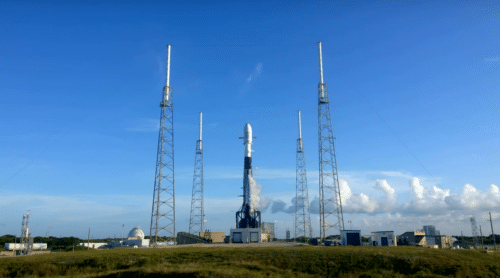South Korea successfully launched its first lunar mission on 4th August 2022, and now it is on its way to the moon. The Korea Pathfinder Lunar Orbiter (KPLO), loaded onto SpaceX’s Falcon 9 rocket, launched from Cape Canaveral in Florida to begin its four and a half month journey to the Moon.

NASA and the South Korean space agency, Korea Aerospace Research Institute, worked together to create the KPLO. Its launch is a huge undertaking for SpaceX as well as South Korea. Despite the fact that SpaceX has launched multiple rockets over a long period of time, they rarely aim for the moon.
Although the KPLO launch on Thursday was a hopeful beginning, the mission’s success won’t be known until mid-December. The KPLO, also known as “Danuri,” will use ballistic lunar transfer (BLT) to get to the Moon instead of flying directly there. This method manoeuvres the orbiter into the Moon’s path so that it can become ensnared in lunar orbit by utilising the gravitational pulls of the Sun, Moon, and Earth. As a result, the Danuri will go to the Moon significantly slower and with far less fuel.
The Danuri’s objective, should it succeed in landing on the Moon, is to create lunar exploration technology, carry out scientific research including monitoring the surface environment, and show off and validate existing space technologies. If the mission is extended, it will descend to 70 km or lower after orbiting the Moon at 100 km for a year.
In order to carry out its task, the orbiter is equipped with a number of scientific instruments, such as a magnetometer for detecting magnetic fields and a gamma-ray spectrometer for analysing gamma radiation. In order to gather photographs of various sections of the Moon, it also has a lunar landscape imager, a wide-angle polarimetric camera, and NASA’s high-sensitivity sensor ShadowCam.
Interestingly, the Danuri also features a delay/disruption tolerant networking (DTN) experiment aboard to test the ship’s ability to send data over space. DTN technology, which is akin to a space internet, has already been successfully employed by the International Space Station, but this will be the first time it is tested outside of the Earth’s orbit.






